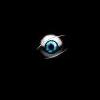
Slow PC
Started by
Adrenalin
, Nov 01 2007 12:15 PM
#16

 Posted 05 November 2007 - 01:14 PM
Posted 05 November 2007 - 01:14 PM

#17

 Posted 05 November 2007 - 01:35 PM
Posted 05 November 2007 - 01:35 PM

Thanks Adrenalin,
I'd best step out of the way, so you can pursue the important line of investigation suggested by The Skeptic.
Best Regards
I'd best step out of the way, so you can pursue the important line of investigation suggested by The Skeptic.
Best Regards
#18

 Posted 05 November 2007 - 01:44 PM
Posted 05 November 2007 - 01:44 PM

Yeah i am going to try see if ti is a) IDE cable b) jumpers [although i dont see why it would be that if they were working fine] and c) a bigger hammer 
I'll let you know if i can get it sorted out.
I'll let you know if i can get it sorted out.
#19

 Posted 06 November 2007 - 09:38 AM
Posted 06 November 2007 - 09:38 AM

Ok, so changed IDe cables, drive still shows in BIOS and Device manager, but not in my computer?! This has now boggled my brain for a while and i thought changing IDE cables and swapping from IDE2 to IDE1 would work, but it hasn't. Other forums suggest that the drive does not have a drive letter assigned to it and that other people should right click on my computer, click on manage, and then assign a drive letter to it, my only problem is that the drive isn't in there! only device manager and bios! what the blazers?!  Why on earth would it be in the BIOS and device manager but not in my computer?!
Why on earth would it be in the BIOS and device manager but not in my computer?!
#20

 Posted 06 November 2007 - 12:00 PM
Posted 06 November 2007 - 12:00 PM

Jumper the 40 gig HD as master (or single, or cs) and install it on IDE0, at the cable end connector. Disconnect all other IDE drives. Use a bootable DOS floppy (win98 rescue diskete or other version of DOS). Boot the computer to DOS. Run FDISK to wipe old partition and create new partitions. Reboot and format the disk to FAT32. The disk should be recignized now. If it is, reformat in XP to NTFS.
If it doesn't we will try to zero all the disk bits, run fdisk again and reformat to FAT32.
Please write down the make and model of the disk.
If it doesn't we will try to zero all the disk bits, run fdisk again and reformat to FAT32.
Please write down the make and model of the disk.
Similar Topics
0 user(s) are reading this topic
0 members, 0 guests, 0 anonymous users
As Featured On:














 Sign In
Sign In Create Account
Create Account

